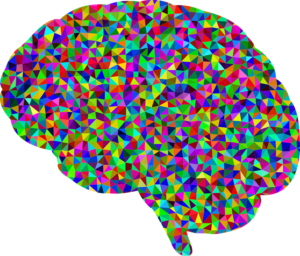J-Term: Criminal Minds
This next installment in the J-Term series has been written by Lucy Guarnera, J-Term Instructor in Clinical Psychology. See the other J-Term blogs here.

I love teaching “Criminal Minds: The Science of Modern Forensic Psychology,” a course I first taught in Fall 2015 and adapted for J-term in January 2017. Students come into the class already excited by media portrayals of forensic psychologists as gun-toting rogues with uncanny, almost supernatural insight into offenders’ psyches, inspired by movies and TV shows such as Criminal Minds, Silence of the Lambs, Law & Order: SVU, and Sherlock. Throughout the 10 days of J-term, students’ pre-existing fascination with (largely inaccurate) media portrayals of forensic psychology as an intuitive, impressionistic art served as a starting point to address the Big Question of the course: “What can and can’t psychological science actually tell us when it comes to the ‘criminal mind’?”
For example, students conducted in-class debates on a controversial issue in forensic psychology: the use of Sexually Violent Predator (SVP) laws to civilly commit sexual offenders for an indefinite period after completing their prison sentences. In order to defend their positions, students needed to research what psychological science can and can’t offer in this arena: What are the typical rates of re-offense for sexual offenders? How accurate are our risk assessment instruments designed to predict reoffending? Do sex offenders receive effective treatment while civilly committed? As students dug into the research on SVP laws, they discovered that most decisions in forensic psychology come with a risk of error in two directions—e.g., the risk of indefinitely detaining a low-risk offender on one hand, vs. the risk of releasing a high-risk offender who may strike again on the other. Through the debate format, students explored how any legal or policy decision must strike a balance between these two types of error, and how the balance reached inevitably takes into account values and preferences, not just scientific findings.
All of these conversations about science, law, policy, and values came to a head during students’ major assignment of the course: writing a real forensic report addressing a criminal defendant’s claim to the insanity defense. Students read background evidence and viewed a videotaped forensic interview with a real-life defendant who killed an acquaintance while experiencing persecutory delusions as a result of severe mental illness. Students then needed to apply all of this complex psychological evidence to the narrow legal question at hand: whether, at the time of the offense, the defendant was unable to appreciate the criminality of her conduct and/or unable to conform her behavior to the requirements of the law. Throughout the process of writing this forensic report, students wrestled with the issues real forensic psychologists face in the course of their work. For example, students had strong emotional reactions to the video of the defendant, ranging from pity to loathing, and had to reflect on how their personal feelings might impact their reasoning. Some students flip-flopped on their conclusion over and over again, as they sifted the defendant’s complex, often contradictory statements about her motives and actions. Students also needed to consider the possibility that the defendant was malingering, or feigning psychological deficits for external gain. Students became so invested in this project that on the last day of class, they were clamoring to read the conclusion of the forensic psychologists in the original, real-life case, so that they could see how their own reasoning compared.
This project encapsulates why I love teaching this class—I get to start with students already fascinated with the subject matter, and help them harness this initial interest to do the really difficult work of balancing limited science and real human consequences in a complex world.
- A Revolution in the Air: The Wright Brothers Take to the Sky on December 17, 1903
- Musings on National Violin Day
- Making the Promise Real: How a UN Tax Convention Can Fulfill the UNDHR’s Vision
- UVA Club of Atlanta: Virtual Pilates Class
- UVA Club of Vietnam: J-Term Farewell Social
- UVA Club of Charlottesville: Hoos Reading Hoos January Book Club

